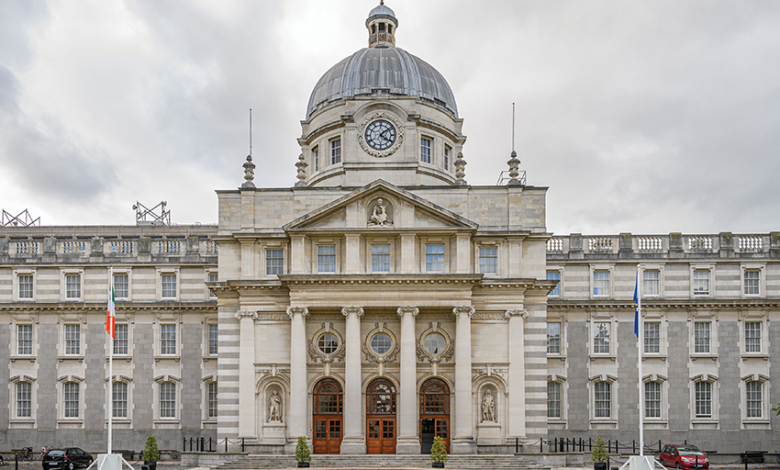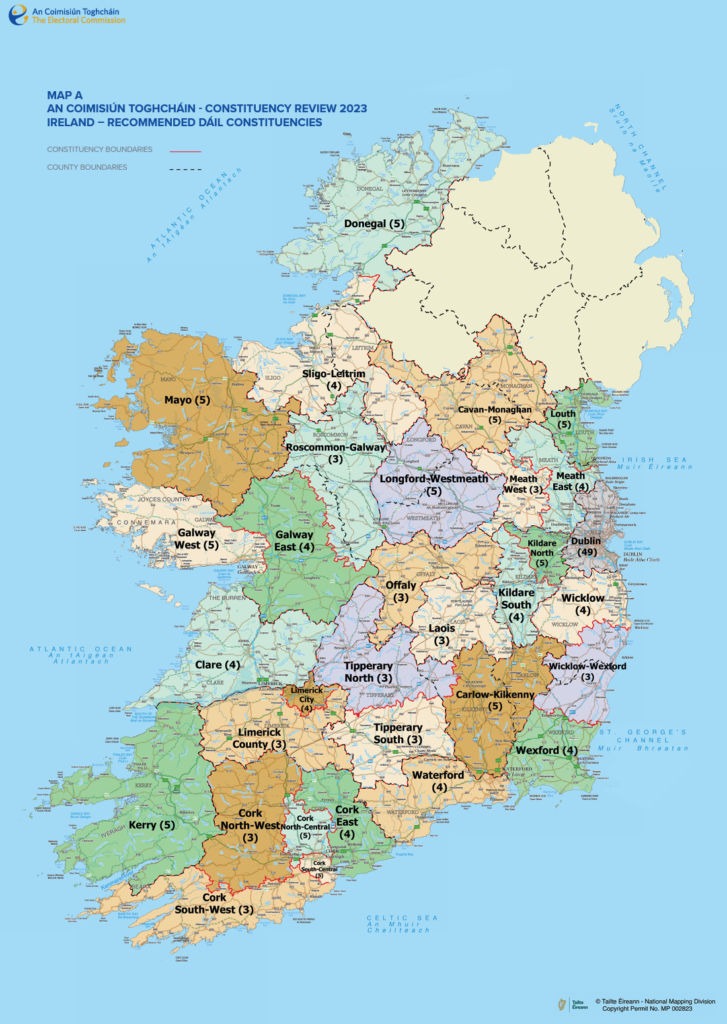New Dáil constituencies announced

Having concluded a consultation on the makeup of constituencies for the next Dáil, An Coimisiún Toghcháin has announced that there will be 14 additional TDs in the 34th Dáil.
With a total of 174 TDs in the next Dáil, the number of TDs elected to the national parliament will be a high watermark in the history of the State. However, the scale of these changes has not as been radical as was constitutionally possible.
With a population of 5,123,536 people in the State and a current total of 160 TDs in the 33rd Dáil, the average number of people per TD in the State is 32,022, meaning that an increase in the number of TDs was required under the limits set by Bunreacht na hÉireann.
The Oireachtas had given An Coimisiún Toghcháin permission to increase the number of TDs in the next Dáil by between 11 and 21, meaning that there could have been anything from 171 to 181 TDs in the next Dáil.
The Constitution outlines that political representation at Dáil level must have a minimum ratio of one member per 20,000 population, and a maximum ratio of one member per 30,000. In theory, this means there could be as many as 250 TDs.
The Commission’s final report, however, means that there will be one TD per roughly 29,500 population, meaning the TD to population remains at the higher end of the scale and almost certainly meaning that another review will be needed within a decade as there will be at least two general elections between now and the end of 2030.
Given the current trends of population growth in the State, it is projected, based on population predictions by the CSO, that there must be an average increase in TDs of two per year for the rest of this decade.
The report by An Coimisiún Toghcháin has rationalised that the lower number of TDs was consciously recommended in order to maximise the integrity of county boundaries, with the number of breaches having been reduced overall.
However, this more conservative figure of 174 TDs has also increased the number of constituencies electing just three TDs. This is a source of contention for TDs in marginal seats or prospective TDs from smaller parties as these constituencies tend to be dominated by the larger parties, Fine Gael, Fianna Fáil, and now, Sinn Féin.
One can describe the increase in three-seat constituencies as being bad for Ireland’s PR electoral system, as smaller parties often do not get the opportunity to avail of transfers which would propel them to success over the larger parties in four- and five-seat constituencies, and the fact that having more seats in a constituency tends to lead to a more proportional outcome.
Crucially, An Coimisiún Toghcháin has stated that there will be a review on the prospect of the creation of Dail constituencies with six seats. Currently, legislation underpins that Dail constituencies must be between three and five seats, but since there is no provision for this in the constitution the legislation can be overturned. Indeed, there is historical precedent for the creation of constituencies with more than five TDs, with early elections held in the State having been contested in constituencies with as many as nine seats.

Good news for the larger parties
The general consensus among the political commentariat is that the new constituencies and the three-seaters are advantageous to the larger parties, although there are differing schools of thought on which parties among the big three will be most satisfied at the proposals.
Broadly, Sinn Féin will be happy at the number of five-seater constituencies in the parts of the country where it performed best at the last election, namely Donegal, Cavan-Monaghan, and Dublin Mid-West, all of which are seats where the party can gain a seat based its 2020 first preference votes.
Whilst Sinn Féin will be broadly satisfied at the new boundaries, there is more of a mixed picture for Fine Gael and Fianna Fáil.
The splitting of Tipperary into two three-seat constituencies will be broadly well received by the two government parties, as will the somewhat surprising expansion of Mayo into a five-seater, which was not anticipated as being likely to be expanded.
Additionally, the redrawing of the constituency of Dún Laoghaire and the demographic changes which go along with said change may present a challenge to Fianna Fáil in that constituency.
Whilst many have rationalised that the redrawing of the electoral map will be disadvantageous for small parties, it has been hypothesised that the number of TDs from small parties would have been higher if the last election had been held under the current proposed boundaries, with the Social Democrats and People Before Profit both likely to have won more seats in that scenario.
Ultimately, the fact that smaller parties may stand to lose seats in the next election is unlikely to be determined by the new boundaries, rather it is the anticipated growth of the Sinn Féin vote following the next election which, if the party’s polling holds, will negatively correlate with the seats held by smaller left parties.
With the boundaries having been drawn up in a nonpartisan manner by An Coimisiún Toghcháin, the changes will be in place by the time of the next election, which is expected to take place as soon as the autumn of 2024, and parties will now be able to plan their strategies with the new boundaries in mind.





